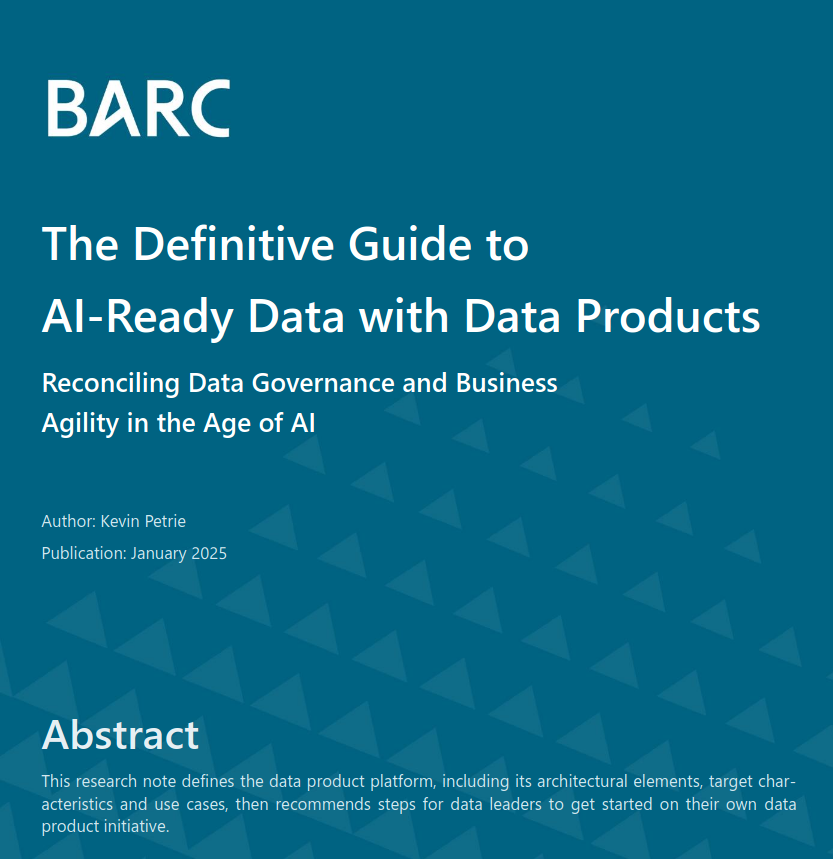The Definitive Guide to AI-Ready Data with Data Products – Book Review

Book Report Name: The Definitive Guide to AI-Ready Data with Data Products
Author Name: Kevin Petrie
Published by: BARC GmbH (Sponsored by Dremio)
Publication Date: January 2025
Pages: ~16
Rating: 4/5
Review
I recently read The Definitive Guide to AI-Ready Data with Data Products, and it offers a solid, practical guide to structuring data for AI and analytics in modern organizations. While highly informative, I felt that some areas could have been expanded upon—hence my 4-star rating instead of 5.
What Makes This Guide Valuable?
One of the biggest challenges in AI and analytics today is balancing centralized data governance with decentralized access. The book introduces data products—modular, reusable packages of data and metadata that work like Lego blocks for analytics and AI. The idea is to make data more accessible to business teams without sacrificing governance and security.
It explains how Data Product Platforms help organizations create self-service data models while maintaining control over standards, using key architectural components such as:
- Table formats (Apache Iceberg) to ensure flexible, scalable data storage
- Query engines (Dremio, Trino) for high-performance data access
- Pipeline tools (Airflow, dbt) to automate data workflows
- Metadata catalogs (Unity Catalog, Apache Polaris) for structured data governance
The real-world case studies stood out to me. Companies like Maersk and Henkel successfully used data product platforms to reduce costs, improve efficiency, and modernize their analytics infrastructure. These practical examples help translate theory into real business impact.
Where It Could Be Improved
While the book provides an excellent high-level framework, it lacks deeper technical implementation details. For example:
- More Detailed Guidance in few areas: The book covers the why and what of data product platforms well, but not the how. A more detailed implementation roadmap, including sample workflows and step-by-step architecture planning, would be beneficial.
Practical Takeaways for Businesses
For organizations looking to adopt this approach, the book recommends a three-step strategy:
- Find the pain points—Identify bottlenecks in BI, analytics, or AI efforts.
- Start small—Select a high-impact use case and demonstrate quick wins within 3-6 months.
- Expand gradually—Scale the platform across teams while refining processes.
Final Verdict
If you work in AI, data engineering, or analytics, this book is a great resource for modernizing your data management strategy. It provides a clear roadmap for building AI-ready, well-governed data environments while promoting data democratization. However, if you’re looking for deep technical implementation details, you might need to supplement this book with additional resources.
Final Rating: ⭐⭐⭐⭐ (4/5) – Great for strategic insights, but could use more hands-on depth. 🚀
LEAVE A COMMENT
Comments are powered by Utterances. A free GitHub account is required. Comments are moderated. Be respectful. No swearing or inflammatory language. No spam.
I reserve the right to delete any inappropriate comments. All comments for all pages can be viewed and searched online here. To edit or delete your comment: click the "Comments" link at the top of the comments section below where it says how many comments have been left (this will take you to a GitHub page with all comments for this page) --> find your comment on this GitHub page and click the 3 dots in the top-right --> click "Edit" or "Delete". Editing or adding a comment from the GitHub page also gives you a nicer editor.